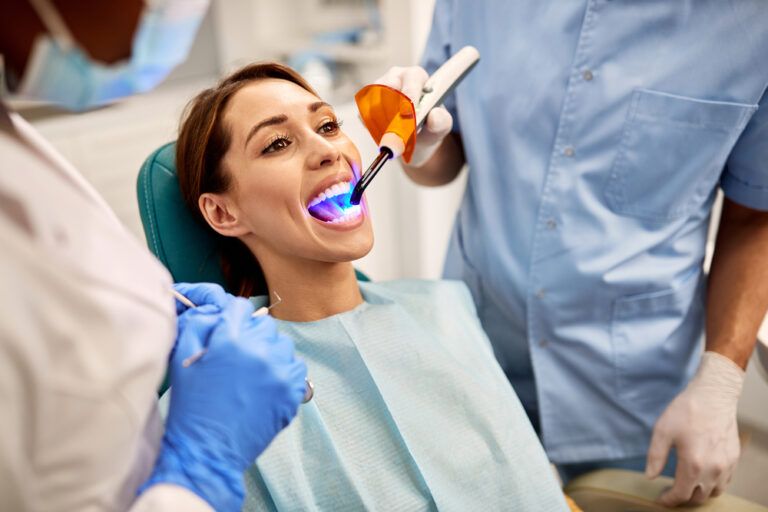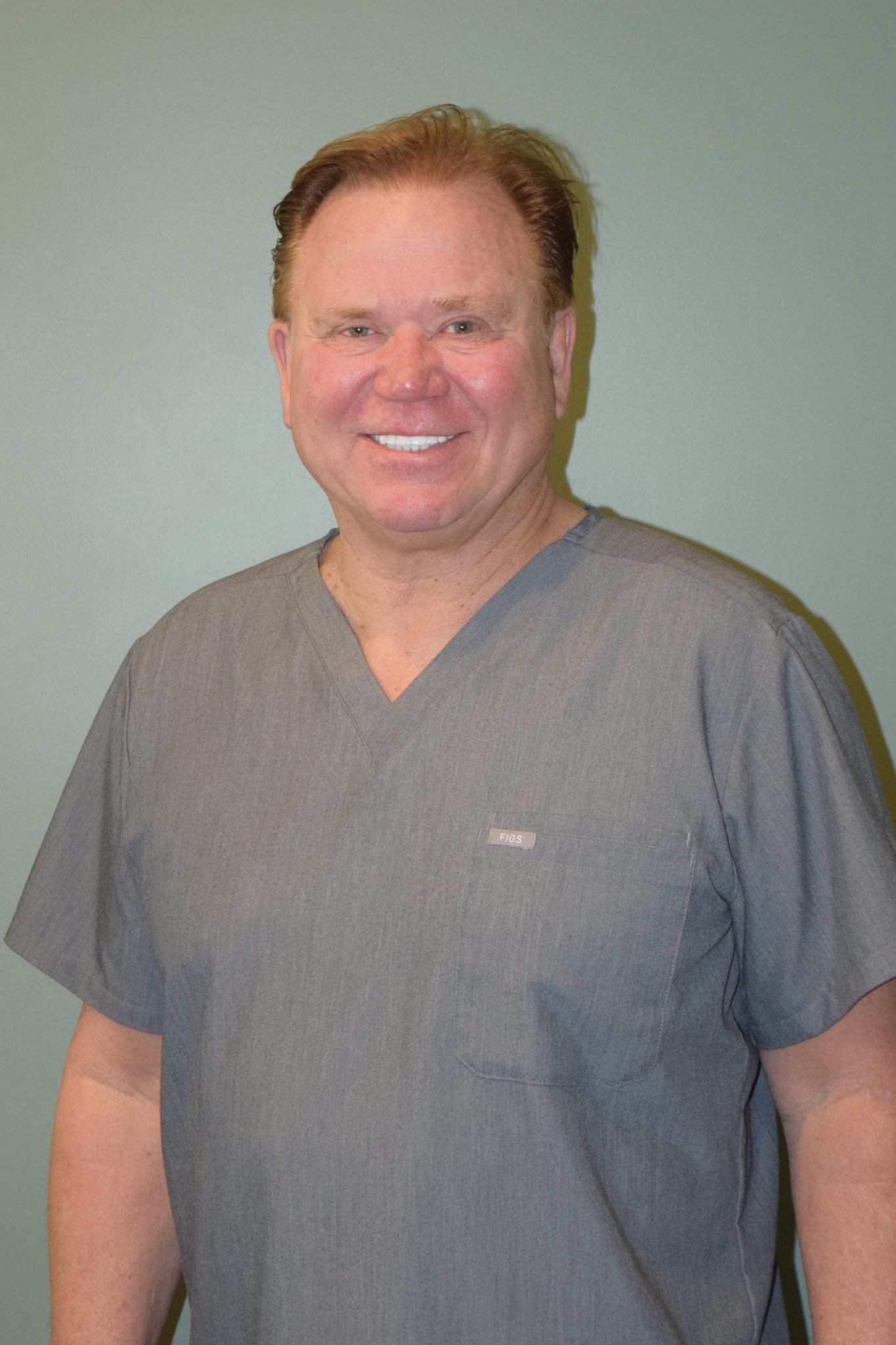The Role of Lasers in Dental Procedures

Laser technology has become a transformative tool in modern dentistry, offering precise, minimally invasive solutions for a wide range of treatments. At Sunset Dental Group in Santa Ana, CA, Drs. Amanda and Jerry Kronquist are committed to patient education and transparency. Understanding how lasers function and their role in improving dental care can help patients make more informed decisions about their oral health. From soft tissue surgeries to cavity treatments, lasers are changing the way dentists approach many common procedures.
While lasers may once have seemed like a futuristic addition to dental offices, they are now well-established in both general and specialized care. Their integration into dental practice has provided both clinicians and patients with options that reduce discomfort, shorten recovery time, and improve accuracy. In this blog, we’ll explore how dental lasers work, the types of procedures they’re used in, and what patients should know about the experience and benefits.
Understanding the Basics of Dental Laser Technology
Lasers used in dentistry operate by delivering focused light energy that can cut, shape, or vaporize tissue. The wavelength of the laser determines its use—some are better for hard tissues like enamel and bone, while others are designed for soft tissues like gums and mucosa. Each type of laser targets specific chromophores (light-absorbing substances) in tissues, such as water, hemoglobin, or hydroxyapatite.
In a dental setting, lasers replace or supplement traditional tools such as scalpels and drills. For instance, in soft tissue procedures, a laser can simultaneously cut and cauterize, reducing bleeding and accelerating healing. In hard tissue applications, lasers can remove decayed enamel or dentin with minimal heat and vibration, making the experience more comfortable for patients who are sensitive to traditional dental instruments.
The effectiveness and precision of lasers depend on the type of procedure, the specific technology being used, and the skill of the dental professional. Patients may notice a quieter, less invasive environment when lasers are used—often with reduced need for anesthesia and fewer post-operative complications.
Soft Tissue Procedures: A Gentle Alternative
Soft tissue lasers are widely used in procedures involving the gums, tongue, and inner cheeks. These lasers can cut tissue with incredible accuracy while simultaneously sealing blood vessels and nerve endings. As a result, patients often experience minimal bleeding, less swelling, and reduced need for sutures.
One of the most common applications of soft tissue lasers is in gum reshaping, also known as gingivectomy or crown lengthening. These procedures can correct uneven gum lines or expose more of the tooth for restorative work. Lasers are also used in treating periodontal disease by removing infected tissue and disinfecting the area without damaging surrounding healthy structures.
Other examples include frenectomies (removal of the tissue that causes tongue-tie or lip-tie), treatment of canker sores and cold sores, and biopsy procedures. In all these cases, the laser provides a more comfortable experience for the patient, along with faster recovery compared to traditional surgical methods.
Hard Tissue Procedures: Precision Without the Drill
Hard tissue lasers are designed to cut through enamel, dentin, and even bone in certain applications. They are commonly used for preparing cavities, removing decayed areas, and performing minor bone contouring. These lasers offer a significant advantage in comfort—many patients report feeling little to no vibration, pressure, or heat during these procedures, which are typically associated with the dental drill.
One of the primary uses of hard tissue lasers is cavity preparation. Lasers can precisely target decayed areas without affecting healthy tooth structure, preserving more of the natural tooth. They are also helpful in detecting early stages of decay that may not be visible on X-rays, allowing for earlier intervention and less invasive treatment.
In some cases, hard tissue lasers can also be used to reshape or modify bone tissue around the teeth and jaw, especially in preparation for restorative procedures like crowns or implants. Although not a complete replacement for traditional drills in all scenarios, lasers offer a beneficial option for patients with dental anxiety or sensitivity.
Benefits of Laser Dentistry for Patients
Dental lasers provide a range of benefits that appeal to both patients and practitioners. The most noticeable for patients is likely the increased comfort and reduced invasiveness of the procedure. Laser treatments often require less or no anesthesia, involve minimal bleeding, and shorten healing times—all of which contribute to a better overall dental experience.
Here are some key advantages of laser dentistry:
- Minimally invasive: Less need for cutting or stitching
- Reduced discomfort: Decreased pain and post-procedure sensitivity
- Faster recovery: Shorter healing periods and fewer complications
- Lower risk of infection: Laser energy sterilizes the treatment area
- Greater precision: Minimizes damage to surrounding tissues
In pediatric and geriatric dentistry, these advantages are particularly valuable. Children often respond more positively to laser procedures than to traditional tools, and older adults benefit from less trauma to fragile tissues and faster healing.
Safety Considerations and Patient Experience
Dental lasers are generally very safe when used by trained professionals, but like any medical device, they require careful handling. Dentists undergo specific training to ensure that they choose the right laser settings and techniques for each case. Patients are typically provided with protective eyewear during laser treatments to shield their eyes from the intense light.
From a patient’s perspective, the experience of undergoing a laser procedure is often quieter and less anxiety-inducing than traditional treatments. The absence of the high-pitched whine of a dental drill or the tug of sutures makes laser dentistry more tolerable for many individuals with dental phobia.
However, it’s important to note that lasers may not be suitable for all treatments. Some procedures still require traditional methods, or a combination of both. Dentists will evaluate each case individually to determine the best approach based on the patient’s needs, the complexity of the procedure, and the equipment available.
Evolving Technologies and the Future of Laser Dentistry
The field of laser dentistry continues to grow, with ongoing research leading to more refined and powerful devices. New wavelengths, improved delivery systems, and integration with other diagnostic tools are expanding the range of procedures that can be performed with lasers. For example, certain diode lasers now come with enhanced fiber-optic tips that increase precision and visibility during surgery.
Another promising area of development is the use of photobiomodulation, or low-level laser therapy, which stimulates tissue regeneration and reduces inflammation. This has shown benefits in post-operative recovery, treatment of temporomandibular joint (TMJ) disorders, and management of chronic oral pain.
With increasing adoption and technological refinement, lasers are likely to play an even larger role in future dental practices. Patients should feel encouraged to ask questions about the availability and appropriateness of laser treatments as part of their personalized care plan.
At Sunset Dental Group in Santa Ana, CA, Drs. Amanda and Jerry Kronquist believe that informed patients are empowered patients. By understanding how lasers are used in modern dentistry, individuals can feel more confident and at ease when facing their next dental procedure.
Resources
Bornstein, E. S. (2017). Lasers in Dentistry: An Overview. Compendium of Continuing Education in Dentistry.
Coluzzi, D. J. (2010). Fundamentals of Dental Lasers: Science and Instruments. Dental Clinics of North America.
Perry, D. A., & Palmer, M. L. (2016). Laser Use in the Management of Periodontal Disease. Dental Clinics of North America.

Recent Comments